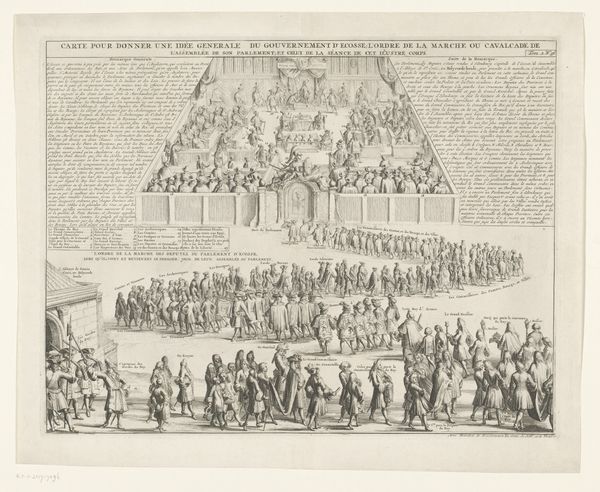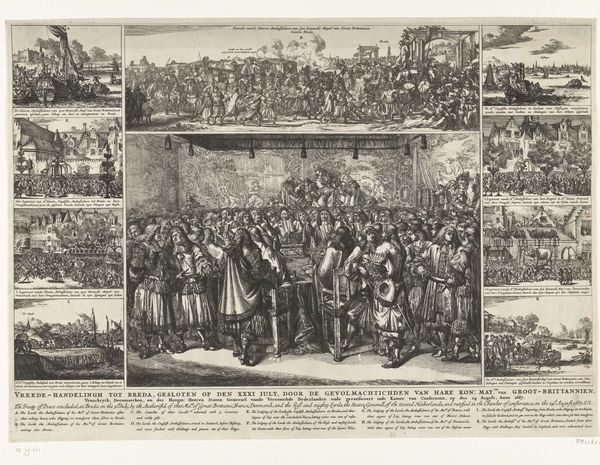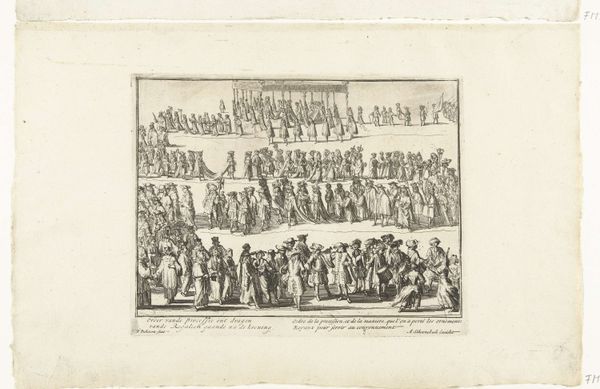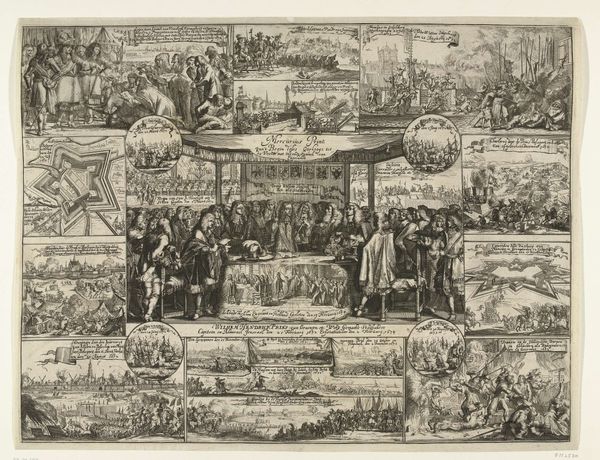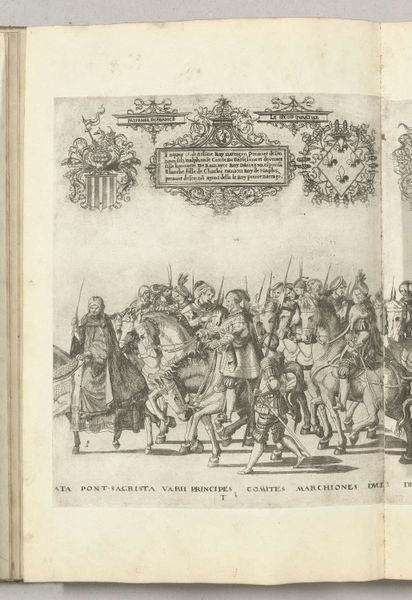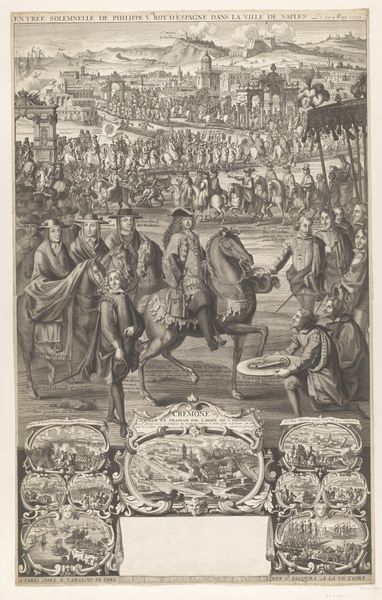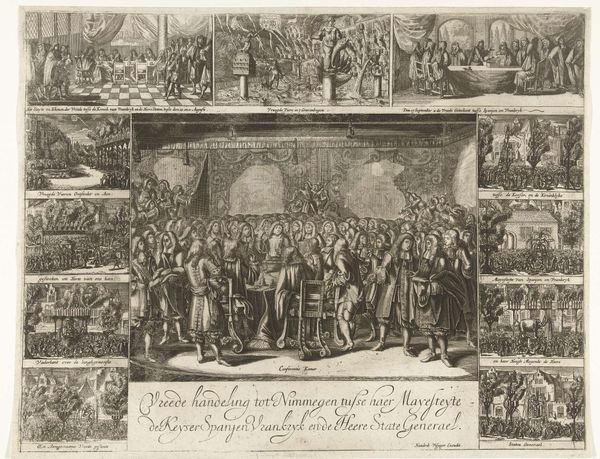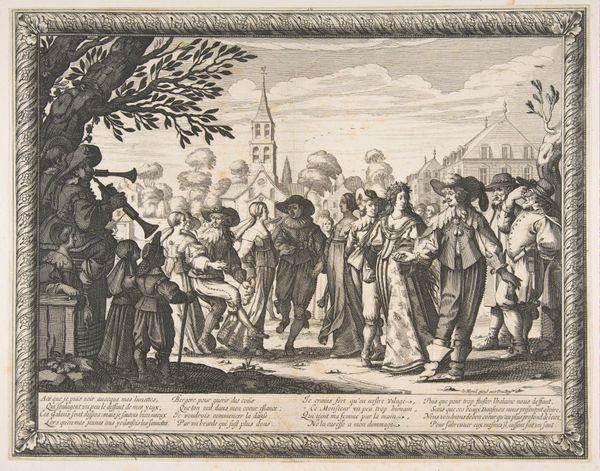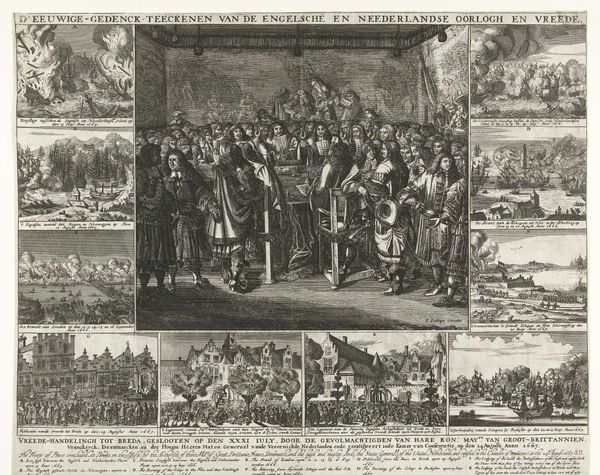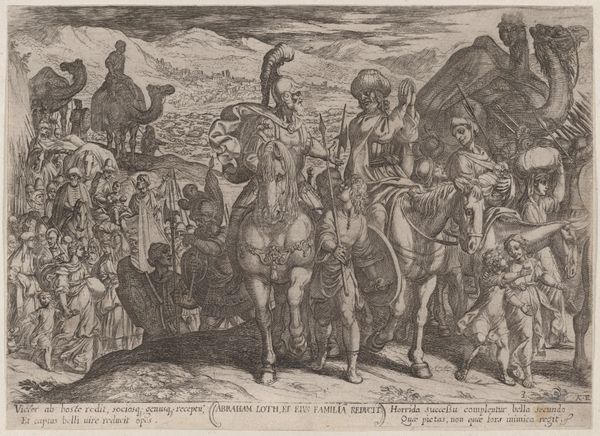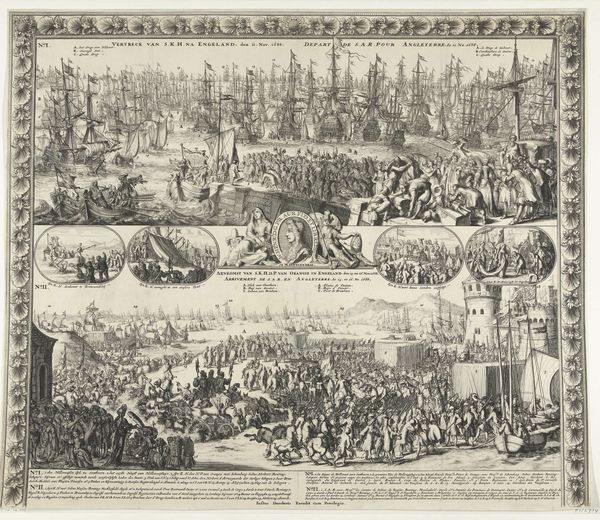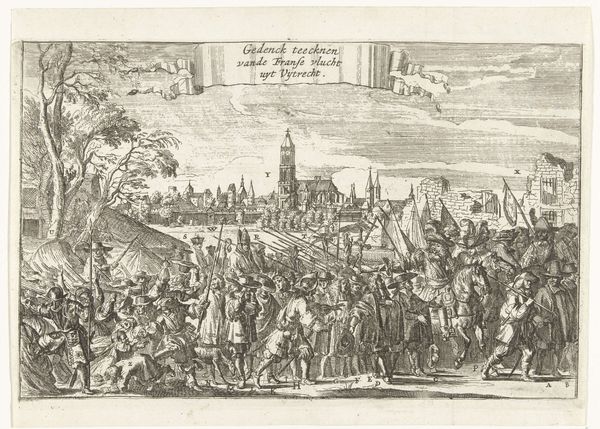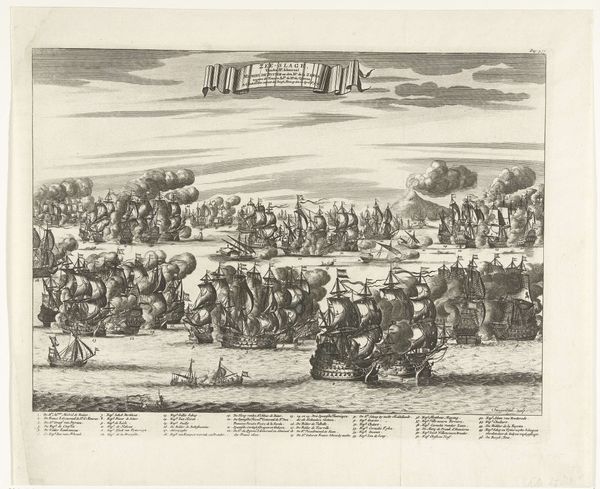
drawing, print, ink, engraving
#
drawing
#
narrative-art
#
baroque
#
pen drawing
# print
#
landscape
#
figuration
#
ink
#
line
#
history-painting
#
engraving
Dimensions: height 438 mm, width 548 mm
Copyright: Rijks Museum: Open Domain
Editor: This detailed engraving, "Begrafenis van veldmaarschalk Paulus Wirtz, 1679" by Romeyn de Hooghe, depicts a grand funeral procession. It's currently held at the Rijksmuseum. The sheer density of figures and symbols is striking. What can you tell me about how its creation reflects the period? Curator: This print is a fascinating example of how art was used to construct and disseminate narratives about power and status in the late 17th century. De Hooghe isn't just recording the funeral; he's producing a piece of political theatre. Consider how the artist presents the order of figures, what messages is being promoted here, who is the artist appealing to? Editor: I see a clear hierarchy, from the high-ranking officials on horseback to the foot soldiers. The sheer scale is intended to impress, I presume? Curator: Exactly. Think about the intended audience for prints like these. They were widely distributed and consumed, influencing public opinion and solidifying the authority of the ruling class and military elite. The event turns into propaganda. Who controls how this imagery circulates and who benefits from its wide distribution? Editor: So it’s less about mourning an individual and more about reinforcing a social order? It’s like an advertisement for power. Curator: Precisely. Consider the prominent display of coats of arms and allegorical figures—symbols readily understood by the intended audience, reinforcing existing power structures and solidifying Wirtz’s legacy, viewed under the right perspective, is very powerful as political imagery. Editor: I hadn’t thought about it that way. It makes me reconsider how visual culture plays such a central role in creating and maintaining authority. Curator: These kinds of historical images prompt us to investigate and to examine the subtle dynamics that inform our historical narratives of politics.
Comments
No comments
Be the first to comment and join the conversation on the ultimate creative platform.
